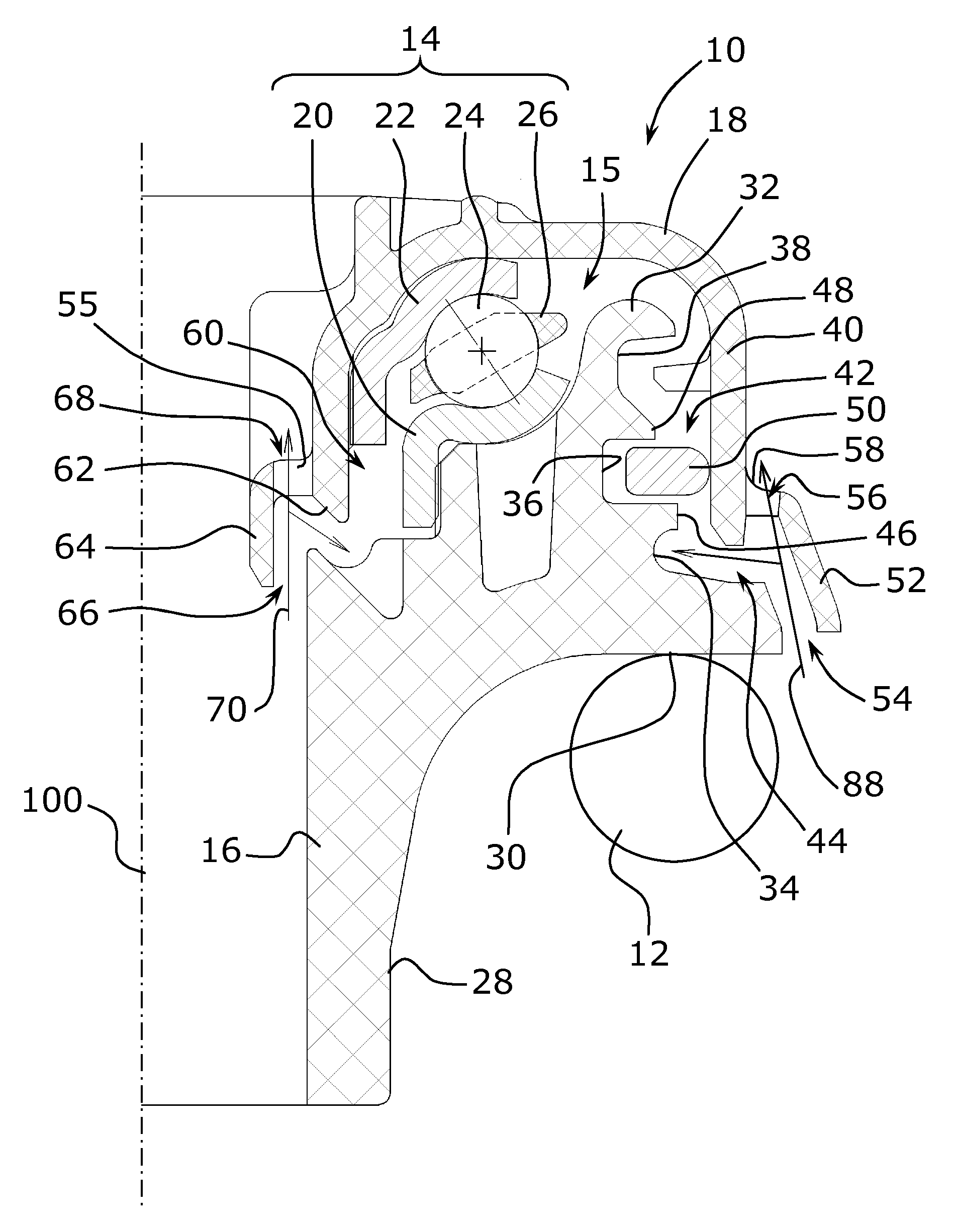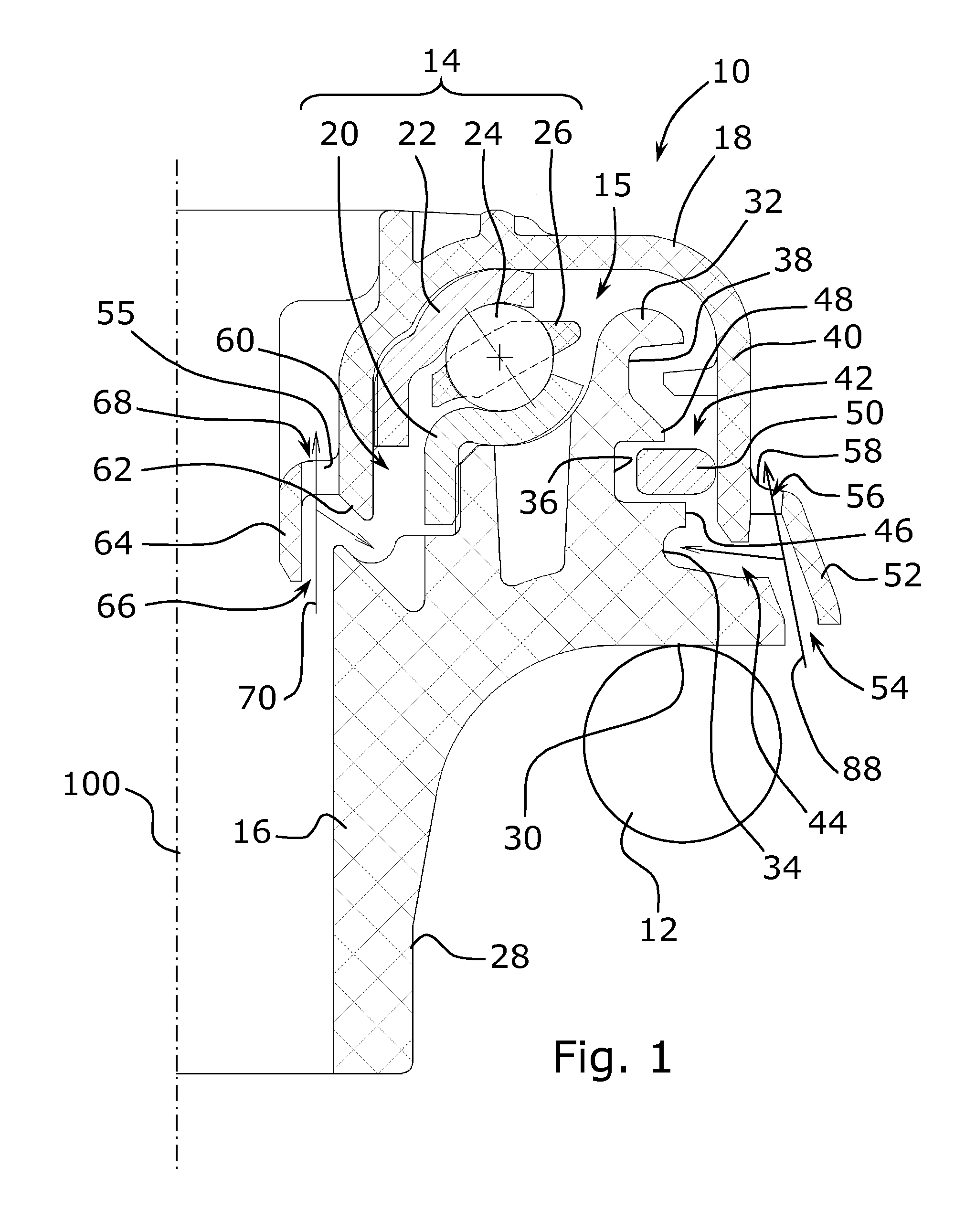Suspension stop with reinforced sealing
- Summary
- Abstract
- Description
- Claims
- Application Information
AI Technical Summary
Benefits of technology
Problems solved by technology
Method used
Image
Examples
Embodiment Construction
)
[0027]FIG. 1 shows a suspension stop device 10 intended to constitute a pivoting interface between a top turn of a coil spring 12 and the body of a vehicle. This stop device 10 comprises a bearing 14 providing the pivoting connection about an axis 100, this bearing 14 being housed in an annular cavity 15 between a bottom support piece 16 under which the top turn of the spring 12 will bear, and a protective cover 18. Where applicable, filtering blocks (not shown) can be provided between the top turn of the spring and the support piece, and / or above the cover. The cover 18 is conformed so as to be housed either directly in a cavity provided for this purpose in the body, or on an interface plate for fixing to the body. In the example considered, the bearing 14 is a roller bearing consisting of a bottom washer 20 and a top washer 22 forming rolling tracks for rolling bodies 24 that are moreover guided in a guide cage 26. The bottom washer 20 rests on reliefs on the bottom support piece...
PUM
 Login to View More
Login to View More Abstract
Description
Claims
Application Information
 Login to View More
Login to View More - R&D
- Intellectual Property
- Life Sciences
- Materials
- Tech Scout
- Unparalleled Data Quality
- Higher Quality Content
- 60% Fewer Hallucinations
Browse by: Latest US Patents, China's latest patents, Technical Efficacy Thesaurus, Application Domain, Technology Topic, Popular Technical Reports.
© 2025 PatSnap. All rights reserved.Legal|Privacy policy|Modern Slavery Act Transparency Statement|Sitemap|About US| Contact US: help@patsnap.com


